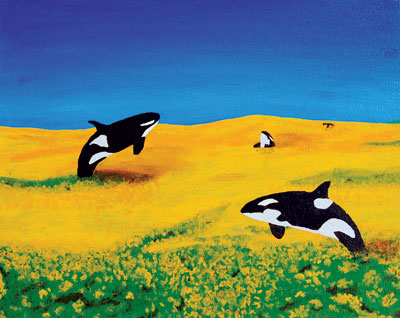All Nonfiction
- Bullying
- Books
- Academic
- Author Interviews
- Celebrity interviews
- College Articles
- College Essays
- Educator of the Year
- Heroes
- Interviews
- Memoir
- Personal Experience
- Sports
- Travel & Culture
All Opinions
- Bullying
- Current Events / Politics
- Discrimination
- Drugs / Alcohol / Smoking
- Entertainment / Celebrities
- Environment
- Love / Relationships
- Movies / Music / TV
- Pop Culture / Trends
- School / College
- Social Issues / Civics
- Spirituality / Religion
- Sports / Hobbies
All Hot Topics
- Bullying
- Community Service
- Environment
- Health
- Letters to the Editor
- Pride & Prejudice
- What Matters
- Back
Summer Guide
- Program Links
- Program Reviews
- Back
College Guide
- College Links
- College Reviews
- College Essays
- College Articles
- Back
It's Time to Ditch Captivity for Good: Why Our Current Regulations Are Failing Orcas
In order to combat the harsh realities revealed about captive orcas in 2013 documentary, “Blackfish,” Assembly Bill 2305 was passed in 2016 in California to advocate for the better care of marine animals. The bill denotes that it is unlawful to hold orcas in captivity for entertainment, breeding, and exportation purposes with exception that orcas may be held captive for either rehabilitation or educational purposes.
While this bill focuses on reasons why orcas can and cannot be captive, it does not specify the regulations for orcas actually kept in captivity. While outlawing captive orcas for entertainment reasons is a huge step for animal rights, shouldn’t we take it a step further to actually ensure that all captive orcas are properly cared for?
It doesn’t matter whether an orca be used for entertainment or education, if its captive environment does not support its needs then it is still animal abuse.
In order to comply with this bill, SeaWorld replaced its entertainment based animal shows with a new, educational-based show known as the ‘Orca Encounter.’This new show features a video on orca behavior, limits how trainers interact with the whales, and claims that tricks are no longer the focal point of the show even though whales still interact with the audience by splashing and jumping out of the water.
While this may seem like progress for an institution that once exploited orcas through cruel entertainment practices, it is important to remember that nothing has changed about the living conditions of the orcas. They are still living in the same concrete tanks they were at the time the documentary was created.
In a BBC article, science journalist, Melissa Hogenboom argues that captive environments do not even come close to fulfilling orca’s needs. Wild orcas are accustomed to swimming over 62 miles per day and naturally “coordinate their movements over scales of tens of kilometres” says conservation biologist Rob Williams, who further explains that “it is difficult to replicate that in any aquarium.”
Wild orcas are also known for their extremely social habits. Hogenboom describes how whales “live in distinct units called ecotypes, each with different habits.” Each ecotype has its own language and hunting habits and are so tightly knit that whales from different ecotypes are genetically different and rarely ever interact with each other in the wild.
In captivity, ecotypes cannot always be taken into consideration, which can have harsh, inadvertent effects on the whales. In a 1989 Seaworld show, Kandu, a more dominant whale, rammed into another whale and injured herself and bled to death. Marine mammal scientist, Naomi Rose, explains how “that degree of aggression has never been observed in the wild. The two whales involved were from different oceans. They would never have encountered each other in the wild."
No matter the reason for captivity, lack of space and mixing of ecotypes will continue to threaten orcas until they are freed from the confines of captivity.
Many are concerned that abolishing captivity and releasing orcas into the wild straight from captivity may cause those orcas to die. If in captivity, an orca was so used to receiving nutrients and constant care; it makes sense that they would struggle living independently in the wild without those resources. However, there is a solution to this: ex situ conservation.
Ex situ conservation means off-site conservation. An example of this would be creating a closed off area in ocean to reintroduce captive orcas into the wild. The reintroduction into the wild would allow orcas to fulfill the fundamental social and physical needs they were denied of in captivity without completely forcing them to be independent after having lived dependently for so many years in captivity.
A truly educational experience does not normalize the abuse of power humans hold over animals but encompasses both the needs of humans and animals--by fulfilling an animal’s fundamental rights while teaching humans how animals truly act in their natural state.
Director of Blackfish, Gabriela Cowperthwaite wishes that Seaworld “embrace the opportunity to truly evolve and retire whales into seaside sanctuaries.” One of the world’s largest mammals does not belong in a concrete tank.
It is time to dismantle the arbitrary hierarchy that divides humans from animals. A real education begins where captivity ends.

Similar Articles
JOIN THE DISCUSSION
This article has 0 comments.
